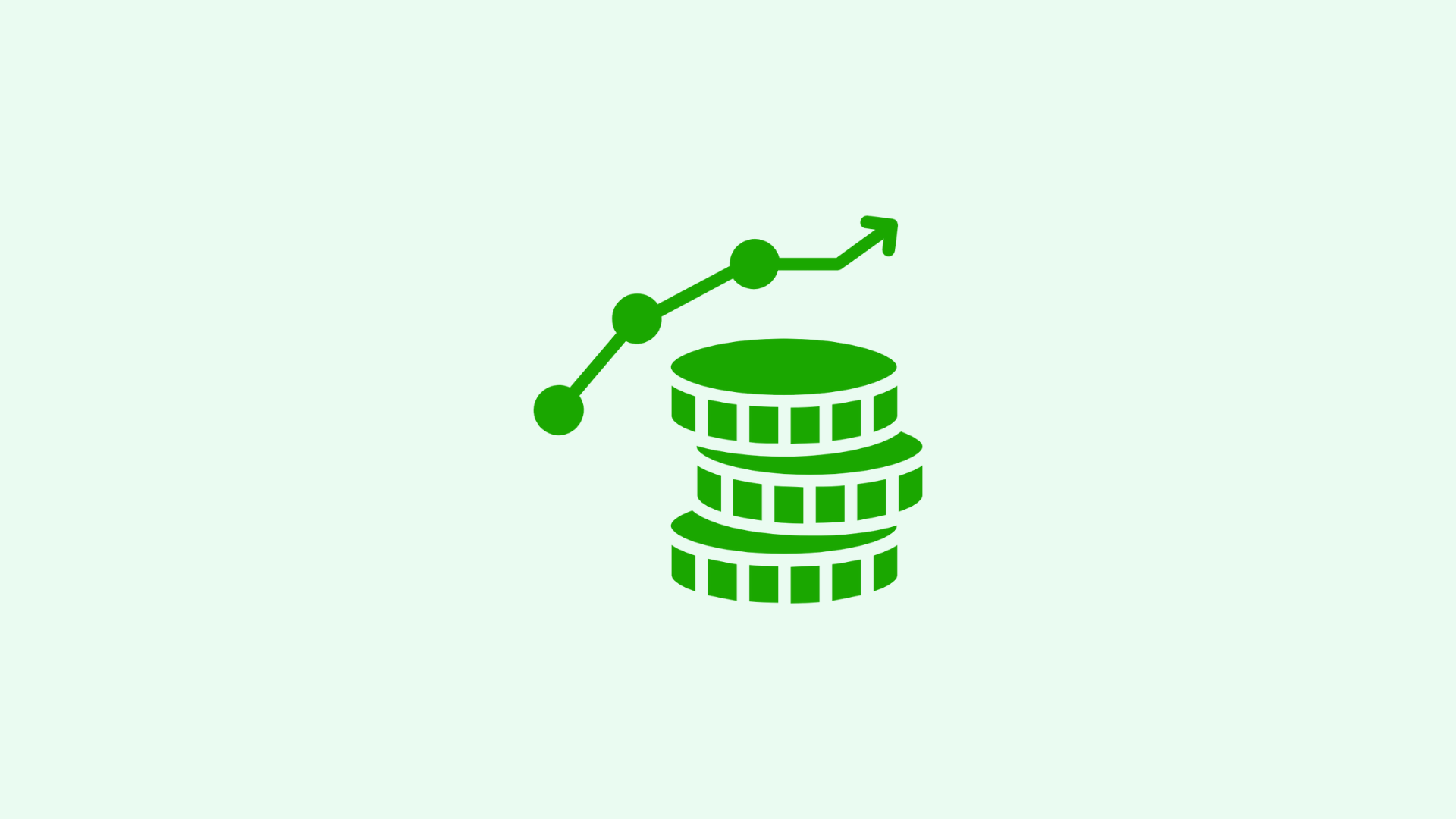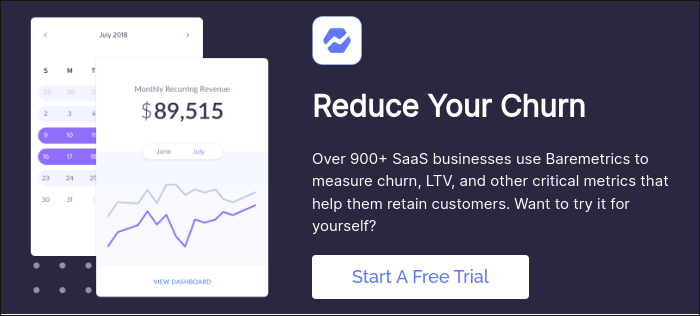Table of Contents

When it was first coined, “bootstrapping” described the impossible task of “pulling yourself up by your bootstraps”. Now, we use bootstrapping to describe the not quite impossible task of building your business without financing.
If you choose not to finance your business by selling part of it to venture capitalists, and you also do not want or cannot secure a loan, then you are left with bootstrapping. When bootstrapping a business, you are using your personal assets—cash, of course, but also your garage, home office, personal car, laptop, and anything else you can extract value from—to build and expand your business.
When you are bootstrapping your company, you need to keep a keen eye on your cash flow. If you’re looking for a smart way to approach your SaaS business’s cash flow, with great prices for people who are bootstrapping their business, get in touch or sign up for the Baremetrics free trial today.
What are the bootstrapping stages?
When bootstrapping your SaaS business, you will typically progress through three main stages: the beginning stage, the customer-funded stage, and the credit stage.
Beginning Stage: At the start, you’ll either not have any revenue or far less revenue than is sustainable. You might need to maintain a full-time job and treat your enterprise as a side hustle. You will be funding your dream using personal savings.
Customer-Funded Stage: At some point, your revenue stream will get to the point where customers can finally fund the day-to-day operations of the business. When revenue begins to exceed your operating expenses, you can invest in growth and will begin to see a stark increase in revenue.
Credit Stage: Part of bootstrapping a company is knowing when you can no longer do it alone. For some people, this might mean raising capital from venture capitalists, while for others it is using their financial statements to secure loans from banks to finance massive growth.
What are the pros and cons of bootstrapping?
Bootstrapping can provide many advantages, but it also has its shortcomings.
Bootstrapping advantages:
- It leaves you the entrepreneur in full control of the finances and direction of the company. You get to maintain your equity in the company and provide its vision.
- You do not have to worry about paying debt if you operate without liabilities.
- Bootstrapping can mean the freedom to work as you wish.
- Without the need to appease a board of directors or a pushy investor, you are free to keep a long view of your company.
Bootstrapping disadvantages:
- You have a lot more personal liability. If you need short-term cash, then the credit cards will be in your name. In addition, if the company falters, then you might be put in the position of deciding between your personal financial health and that of any friends or family who helped you out.
- Because you can only grow as fast as your capital allows, bootstrapped companies often grow much more slowly. You may also need to be more aware of your cash flows, which could lead you to make decisions that help today at the cost of tomorrow.
- Working with well-respected venture capitalists, accelerators, or incubators can provide a wealth of knowledge. That mentorship could be the difference between success and failure.
If bootstrapping doesn’t sound like it’s for you, check out this resource on the different types of funding you can raise. From crowdsourcing to equity financing, there’s lots of ways to handle founding a business.
Many bootstrapped business owners use their Baremetrics dashboards to get investments from bigger funds. Sign up for a Baremetrics free trial to see how your business is doing!
Keep a keen eye on your cash flow with Baremetrics
Get deep insights into MRR, churn, LTV and more to grow your business
What does bootstrapping look like for SaaS?
There are four basic market structures where you can situate a strong SaaS startup.
- Existing markets: This is your average market. There is a known customer base and a lot of companies servicing them. Without a dominant player, you can find what you are good at and focus on the value you bring compared to the rest of the market.
- Re-segmented markets: If a market already has some major players, then you need to find a way to offer something new. This can be done by finding a niche within the market that no one else sees and segmenting them off. By distinguishing your brand, you can cater to a segment of the market that no one knew existed.
- Clone markets: This is the art of taking an existing business and copying it somewhere else. This could mean taking something popular in one country and bringing it to another or bringing the innovation of one industry to another. You’ve probably heard of the latter as “uberization.”
- New markets: This is where you have come up with something so completely new that there are neither customers nor competitors. This is where you have to find people and show how something completely unheard of today will be indispensable tomorrow.
When you are bootstrapping a SaaS business, you need to do everything on the cheap. This means both finding cheaper alternatives to financing, marketing, etc. and, where possible, turning big one-time purchases into smaller monthly or annual ones. In both cases, the goal is to improve your cash flows so that you have time to get a robust revenue stream.
Financial bootstrapping
Financial bootstrapping, as mentioned above, is about paying as little as possible and as late as possible. Here are some ideas for bootstrapping finances:
- Try not to rent a place. Especially now, the work from home model has been proven successful. If you do feel the need for a formal workspace eventually, look into the low-cost co-working spaces.
- Office furniture and equipment can be expensive. Buy used or lease if you can.
- Just like how you add value to other companies, see what SaaS offerings could benefit you. Paying monthly for your software needs can be a lot better on your cash flows than buying a lot of expensive packages outright.
- See if you can trade services with other SaaS startups. If you both provide valuable software, maybe this is a good way to reduce your cash expense.
- Focus as much as possible on your burgeoning revenue stream. This means increasing your Annual Recurring Revenue (ARR) on the one hand and minimizing your churn on the other.
- Pay suppliers that offer an early payment discount first. Conversely, try and negotiate longer interest-free invoicing periods where possible. You’d be surprised how much 60 instead of 30 days of interest free payments can help when you are cash strapped.
Marketing bootstrapping
Bootstrapping in marketing is usually used to describe marketing strategies where ingenuity and precision can make up for a meager budget.
Here are some cheap marketing tactics that every bootstrapping company can employ:
- Offer free trials of your products. This helps you prove to prospective clients that your software adds value to their business.
- Use email! From dunning emails to cold emails, and everything in between, email is a cheap and surprisingly effective way to get new users, push current users to upgrade, prevent users from canceling, and bring back users that have canceled.
- Figure out what social media is popular with your target market and use them.
- Set up a blog with a free program like WordPress. You can also comment on other blogs to attract people to your site.
- See if you can find cheap or free media publicity. Often smaller sites do not have enough material and a well written article is welcome.
- See if your current customers are willing to write testimonials for use in marketing materials.
- Figure out which companies offer complementary goods and see if they are willing to cross promote with you.
If you’re still using spreadsheets and basic dashboards to monitor and manage your cash flow, you’re not only operating inefficiently, but you’re also probably leaving money on the table.
Baremetrics’ advanced analytics and reporting tools offer an affordable, fast, and flexible means to ensure you stay on top of and optimize your SaaS business’s cash flow.
When it comes to tracking your money, Baremetrics does all the heavy lifting for you. Baremetrics intelligently “automates away” meaningless numbers to uncover the true, bigger picture.
A crystal-clear dashboard gives you a holistic view of your expenses, profit, and forecasted cash flow for specific timeframes. All this allows you to quickly spot inconsistencies, eliminate unnecessary waste, and more accurately model your SaaS business’s future based on multiple scenarios.
Sign up for the Baremetrics free trial today to help increase your revenue and decrease your expenses.
What are some bootstrapping business examples?
Many of the most well-known and successful companies that we rely on today began their journey as a bootstrapped enterprise. The following companies are just a few of the many examples (note that many, even if they didn’t start out that way, are earning sizable portions of their revenue now with a SaaS subscription model):
- Apple Inc.
- Cisco Systems Inc.
- Dell Computers
- eBay Inc.
- Facebook Inc.
- Hewlett-Packard
- Microsoft Corp.
- Oracle Corp.
- SAP
What are other options for financing your business beyond bootstrapping?
Beyond bootstrapping, there are many other ways to fund your business. Since we already have an in-depth article on these options, let’s just take a quick look here. The following options are available:
- Bootstrapping
- Friends and family
- Angel Investors
- Incubators/accelerators
- Venture capital
- Private debt capital
- Bank financing
- Private equity
- Mergers and acquisitions
- Initial public offering
The choice among these options will come down to the stage of your SaaS business, your revenue plan, the resources you have available, your risk tolerance, how you feel about debt, and many other business, market, and psychological factors.
Whether you are bootstrapping or seeking VC, determining your company’s net revenue and operating cost is important since the foundation of any e-commerce business is analytics and reporting. These two categories contain the majority of the data that the company requires. Dashboards and metrics, as well as other sales-growing insights and tools, are included with Baremetrics.


